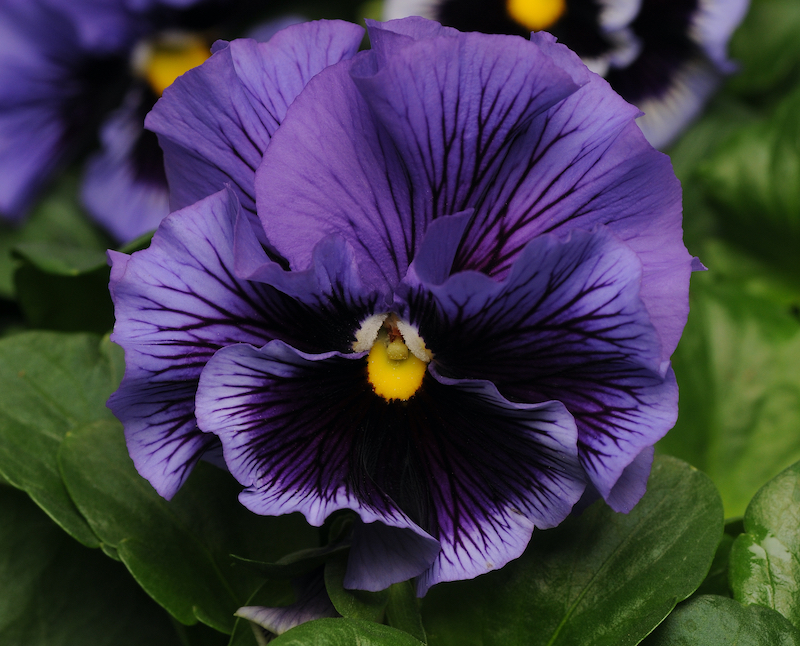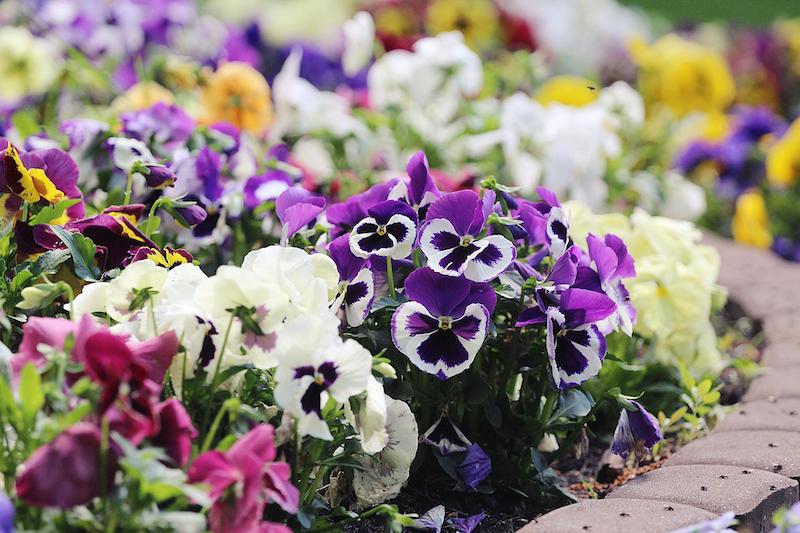Pansies are herbaceous perennials that make a bold statement. The flat-front blooms are the main attraction with overlapping petals in striking shades of purple, white, yellow, or red. The flowers typically feature bold markings, giving the blooms a distinctive look. This cold-hardy plant is a perennial in USDA zones 4 through 9, although there are many different cultivars, so check the variety before planting.
Taking care of Pansies, also known as Violas, is relatively easy, but proper maintenance will ensure maximum flowering and vigorous growth. Many varieties do best in part sun or shade, making this plant a favorite for low-light areas in need of some colorful blooms and style. Some Pansies need direct sun for at least a few hours per day, so it is always important to check the needs of the specific cultivar before selecting a location. This flowering plant will grow between 6 to 12 inches tall and wide.

Planting Pansies
Pansies are fast-growing upright plants with a mounded form. This plant is cold hardy but not very tolerant of high heat, making it better suited to areas that do not have hot summer weather. Another option is to feature this plant in the milder spring or fall, knowing it will fade during the summer heat. This spring and summer bloomer needs well-drained, slightly acidic soil. Pansy plants like moist conditions but do not like to be overly wet. This plant is a heavy feeder and responds well to routine feedings.

Watering Pansies
Pansies have medium water needs and prefer moist but not soggy soil. Water when the top inch of soil is dry. Depending on the amount of sunlight the plant receives and the humidity and temperature, daily watering may be necessary. This plant cannot handle dry conditions. Plant in a naturally damp area, or consider planting near a water source to simplify the watering schedule.
Fertilizing Pansies
Routine fertilizer applications keep Pansies looking full and lush and covered in blooms. Monthly feedings using balanced fertilizer support continued growth. Water-soluble fertilizers are a good option because the feeding can be combined with routine watering. Pansies respond well to fertilizer, but this plant can quickly become leggy, so avoid overdoing it.
Pruning Pansies
Deadheading or removing spent flowers will encourage Pansies to continue to bloom. Removing flowers that have already peaked will force the plant to direct energy into new flowers instead of seed development. Pansies are prone to becoming leggy or having elongated sections of stems, especially if fed too much nitrogen. Pinching back growth just before a node will encourage healthy branching and more full and lush growth.
Caring For Pansies in Pots
Pansies make wonderful container plants and can easily take on the role of filler, although the stems are likely to tumble over the edges when allowed to grow and reach, so this plant is also a bit of a spiller. Potted plants need containers with drainage holes and regular watering. This plant likes consistent moisture, but not soggy soil, so while it needs a drink daily, the excess water must be able to drain.

Winter Care for Pansies
As herbaceous perennials, all greenery will die back when the weather turns cold when grown in colder regions. The growth can be allowed to die or trimmed just above the ground level during the fall. Pansies can retain their growth and even continue to bloom when grown in areas with warm winter weather.
Common Pansies Care Questions
Do Pansies Like Full Sun?
Pansies perform and thrive best with around 6 hours of sunlight daily. In warmer regions, protection from the hot afternoon sun will be appreciated.
Do Pansies Like To Be Wet Or Dry?
Pansies have a preference for rich, moist soil. In containers or on particularly hot days, it may be necessary to water more pansies than once daily.
Why Are My Pansies Dying?
Pansies are generally cool-season fans, and may not perform their best during hot summer months and then come back with vigor in the fall. They are also frequent victims of both under- and over-watering. Consistently moist soil is key.
Why Do Pansy Leaves Turn Yellow?
Yellowing leaves on pansies may be indicative of over-watering, or an infestation of aphids or spider mites. Spraying with a strong stream of water may remove pests or an insecticidal soap spray. If the infestation is severe, a systemic insecticide treatment may be necessary.
Why Do My Pansies Droop?
Pansies will droop when they need a drink of water! Evenly, consistently moist soil is important to keep them from getting a little droopy.
How Do You Keep Pansies Blooming?
The best ways to keep pansies blooming all summer long are plenty of suns but afternoon shade, consistent moisture, fertilizing/feeding, and deadheading those spent blooms!
Do Pansies Bloom More Than Once?
Pansies will likely be the first bloomers in the spring and may take a break during the hot summer months and come back to bloom again when temperatures cool off again in the fall.
Have a question about Pansies? Fill out the form below and we will try and get back to your question as soon as possible. We may even feature your question in this article to help other gardeners!
 |
Author Alison Cotsonas - Published 08-01-2022 |
